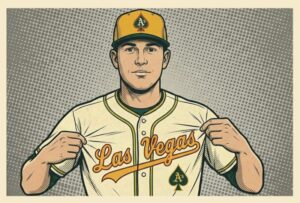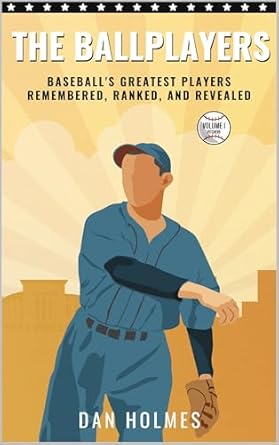
This is the sixth in a ten-part series looking at the Baseball Hall of Fame’s Pre-Integration Era Ballot.
When factoring pitching, fielding, hitting, and baserunning, Bucky Walters was probably the best athlete to toe the rubber during his era, and one of the greatest of all-time.
Walters was more than just a big winner – though he paced the National League in wins three times – he was also a durable starter, good hitter, and the star player on the Cincinnati Reds back-to-back pennant winners of 1939 and 1940.
It was no surprise that Bucky was a fine hitter, since he began his baseball career as a third baseman. But five years into his major league career he took the advice of Philadelphia manager Jimmie Wilson and tried pitching full time. Blessed with a strong arm, Walters worked to harness a good curveball and slider, but it took him a few years to master the craft of pitching at the big league level. He led the NL with 21 losses and had a mediocre 38-53 record with a 4.48 ERA in five seasons tossing the sphere for the Phillies. That’s when his great break came when the Reds acquired him in June of 1938, sending veteran catcher Spud Davis, cash, and pitcher Al Hollingsworth to Philly. Walters benefited from leaving the tiny Baker Bowl and went 11-6 in half a season for the Reds, who were a young and improving team.
Walters dominated the NL in 1939, winning the pitching triple crown with 27 victories, a 2.29 ERA, and 137 K’s, earning MVP honors. The Reds won their first pennant in 20 years, but Bucky lost both of his starts in the World Series to the Yankees, who swept Cincinnati. Walters was nearly as good in 1940, leading the circuit with 22 wins and a 2.48 ERA as Cincy repeated as flag winners. This time around, the slender right-hander was masterful in the World Series, proving practically unhittable against the Detroit Tigers. He went the distance in each of his two starts, allowing just eight hits and three runs. His second win came in Game Six and forced a seventh game, which the Reds won. Walters finished third in MVP voting in 1940, one of five times he earned MVP votes.
In 1941, Walters record dipped to 19-15, but he pitched nearly as well as he had in ’39-40, he just didn’t get very good run support. He led the league in innings and complete games for the third straight season, racking up 87 complete games from 1939-1941.
During the World War II years, Walters was the best pitcher in the NL, leading the league with 23 victories in 1944 at the age of 35. But that was his last great season, as a sore arm chipped away at his effectiveness. Walters tried to make a comeback on 1950 at the age of 41 with the Boston Braves, but he managed to pitch only one game in relief. He retired with a decent W/L mark of 198-160, with a 3.30 ERA and 42 shutouts in 16 seasons.
In 1969, Walters was selected to the Reds 100th anniversary all-time team as the right-handed starter, but his name has been largely forgotten in the years since his passing in 1991, a year after the Reds last World Series title.
His candidacy is based on a peak run of six seasons where he was clearly a very good pitcher, the most consistent and dominant in the National League. But his career ERA+ of 116 is not particularly impressive when compared to Hall of Famers from his era, and outside of his peak, Walters had an ERA over 4.00 and posted a losing record. Was he as great over a short stretch as Sandy Koufax or Addie Joss or any of the pitchers who are in Cooperstown because of their overwhelming peak value? No, he wasn’t, and because Walters failed to even reach career milestones like 200 wins or 2,000 K’s, he fails the magic number test. He did win more games than any other pitcher in baseball from 1935-1949.
In his autobiography, Walters’ teammate Bill Werber wrote: “Big, important games never fazed him, and he seemed to get better as the game went on. We could count on him. He had a good fastball, a decent curve and a sinker that bore in on right-handed batters. As a former infielder, he could field his position as well as anyone in the game. Best of all, he had good control and an excellent knowledge of the batters’ weaknesses.”
Walters was a very good pitcher for a stretch, some of which came when the best ballplayers in his league were in the military. He was the ace on two pennant winners and had a remarkable two-year run where he was 49-21 with 60 complete games. For that, and for his fine peripheral skills as a fielding pitcher and hitter, Walters deserves to be remembered, and he deserves a spot on the Cincinnati Reds All-Time Team. But he’s not Hall of Fame material.





